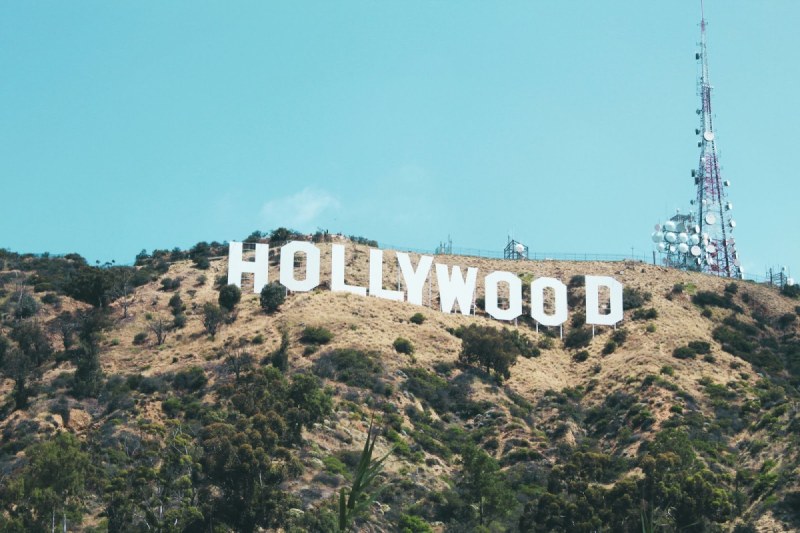Entertainment
David Shane on The Evolution of Hollywood: How Los Angeles Shaped the Entertainment Industry

Hollywood’s evolution from a regional film hub to a global powerhouse reflects its dynamic adaptability and profound cultural impact.
Initially drawing in filmmakers for its ideal filming conditions, Hollywood quickly became synonymous with cinema, revolutionizing the industry through the establishment of the studio system. The Golden Age followed, marked by technological innovations and iconic figures that captivated audiences worldwide.
However, mid-20th-century challenges led to significant shifts with the rise of television and independent films.
David Shane reflects on modern Hollywood as an industry that continues to evolve with digital technologies and globalization, reflecting broader social changes and influencing global entertainment trends. Now, let’s delve into the detailed journey of Hollywood through various phases.
Origins and Development of Hollywood
Hollywood began as a small community in the early 20th century and quickly became the epicenter for film production as filmmakers migrated west, attracted by the favorable climate and the variety of scenery available for a backdrop.
The district’s name, which was believed to have been coined by H. J. Whitley and known as the ‘Father of Hollywood,’ soon became synonymous with the burgeoning industry. As more studios were established, they solidified the foundation of what would become the studio system, characterized by its tight control over production, distribution, and exhibition.
This era marked the rise of major film studios such as Paramount, Warner Bros., and MGM, which dominated the industry and helped turn Hollywood into a cultural icon. The studio system had a profound impact on film production, centralizing operations and turning movie-making into a highly structured business enterprise. This period was crucial in shaping Hollywood’s identity and its influence on global cinema.
As the industry grew, Hollywood became a beacon for talent from across the nation and around the world, drawn by the promise of opportunity and glamour. This influx of talent helped to enrich the cultural fabric of Hollywood and expand its influence, setting the stage for its evolution into a global powerhouse.
The development of Hollywood was not just about the emergence of a new industry but also about the creation of an American cultural institution that would go on to have a lasting impact worldwide.
Hollywood’s Golden Age and Technological Advances
The Golden Age of Hollywood, spanning from the late 1920s to the early 1960s, is often celebrated for its high artistic standards and profound cultural impact.
During this period, the narrative and visual style of American cinema was primarily defined. Iconic films such as “Gone with the Wind” and “Casablanca” were produced, showcasing exceptional talent and securing Hollywood’s place on the global stage.
The era was also marked by the emergence of significant stars like Humphrey Bogart, Marilyn Monroe, and Audrey Hepburn, whose careers left indelible marks on the industry.
Advancements in technology played a critical role in transitioning Hollywood into this golden era. The introduction of sound revolutionized the film industry with the debut of “The Jazz Singer” in 1927, which brought a new dimension to the movie-watching experience. Soon after, Technicolor was introduced, bringing vibrant color to the big screen and enhancing the visual allure of films. These innovations not only expanded the creative palette for filmmakers but also increased audience engagement, setting new expectations for cinematic experiences.
Adjustments in Mid-20th Century Hollywood
Post-Golden Age, Hollywood encountered numerous challenges and transformations. The decline of the studio system in the 1950s, prompted by legal changes and economic pressures, led to a more decentralized approach to filmmaking. This period saw the rise of independent producers and directors who pushed the boundaries of film content and style.
Additionally, the advent of television posed a significant threat to the cinema industry, compelling Hollywood to adapt in order to retain its audience. This adaptation led to the creation of new genres, such as epic blockbusters and the extraordinary effects-driven spectacle aimed at offering experiences that television could not replicate.
These shifts were accompanied by significant changes in audience preferences and the broader cultural landscape. Social and political movements influenced film themes and narratives, reflecting more diverse and sometimes controversial topics.
This era of adjustment was crucial as it set the groundwork for modern cinema, embracing flexibility and innovation in response to evolving entertainment mediums and consumer demands.
Modern Hollywood’s Evolution
In recent decades, Hollywood has undergone significant changes with the shift towards digital filmmaking. The digital revolution has altered every aspect of film production, from the way movies are shot and edited to how they are distributed and consumed. This technological shift has enabled filmmakers to create more visually stunning and complex narratives.
It has also democratized the filmmaking process, allowing independent filmmakers to produce content more affordably and efficiently. As a result, the industry has seen a surge in diversity regarding both the stories told and the voices telling them.
Hollywood’s landscape continues to evolve as it grapples with the rise of new media platforms. Streaming services like Netflix and Amazon Prime have introduced new competition, forcing traditional studios to innovate further. These platforms have expanded the reach of Hollywood productions, making them accessible worldwide and at any time, significantly impacting how audiences consume entertainment and how producers plan their releases.
Hollywood’s Global Influence
Hollywood’s influence on the global entertainment landscape remains unparalleled. As American movies continue to dominate box offices around the world, the industry’s strategies and policies significantly impact global cinema trends. This dominance is not just in viewership but in setting trends that affect film production worldwide, from blockbuster franchises to independent films.
Moreover, Hollywood’s role in shaping global pop culture extends beyond cinema into fashion, music, and social norms.
The industry’s ability to adapt to diverse international markets is a testament to its global strategy. Co-productions with foreign studios, international casting, and catering to regional storytelling tastes are ways Hollywood has maintained its worldwide appeal.
These efforts ensure that it remains at the forefront of the global entertainment industry, continuously expanding its influence and reach.
Los Angeles as a Catalyst for Cultural Influence
Los Angeles, the heartland of Hollywood, has long been a melting pot of cultures, which has profoundly influenced the types of films produced in Hollywood. The city’s diverse population brings a variety of perspectives and stories to the big screen, enriching the American cinema experience.
This cultural diversity is reflected in the increasing number of films that explore non-traditional subjects or employ casts that represent more varied demographics, resonating with a broader audience.
As the entertainment capital, Los Angeles shapes the economic landscape and the cultural and social dynamics of global entertainment. The city’s vibrant cultural scene and its history of innovation continue to attract creative talents from around the world. This influx of talent helps to sustain Hollywood’s status as a leader in global entertainment, constantly pushing the boundaries of what is possible in film and television.
-

 Business2 weeks ago
Business2 weeks agoNayef Doleh Examines International Humanitarian Fundraising Strategies
-

 Business3 weeks ago
Business3 weeks agoHow Black Banx is Redefining Global Banking Strategies in 2025
-

 Business2 weeks ago
Business2 weeks agoHow to fill MSME Form 1? Step-by-Step Guide
-

 Tech4 weeks ago
Tech4 weeks agoHow to Switch Between Microsoft Teams and Skype, How To Export Messages, Files, and Contacts from Skype Before It Shutting Down
-

 Tech3 weeks ago
Tech3 weeks agoMicrosoft Teams to End SMS Messaging Feature Support for Android Phones and Switch to Phone Link App as Alternative
-

 Education3 weeks ago
Education3 weeks agoSchool Of Odd Thinkers – Think Odd, Learn a lot, and Earn a lot
-

 Education3 weeks ago
Education3 weeks agoThe Power of Differentiated Instruction: Patrick Granfar Discusses Its Impact on Student Learning
-

 Education3 weeks ago
Education3 weeks agoJeffrey Laino Offers a Close Look at Literary Analysis Implementation
























